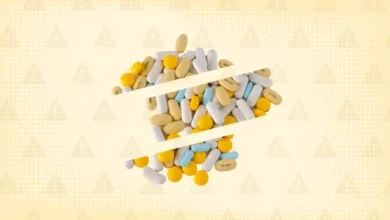Enhancing Accuracy in Pharmaceutical Product Counting: Strategies and Innovations

Accuracy in pharmaceutical product counting is not just a goal; it’s a necessity. Given the critical nature of medications and their impact on health, even the smallest error can have significant consequences. As the pharmaceutical industry seeks to improve efficiency and ensure patient safety, there’s a concerted effort to enhance the accuracy of product counting. This article explores key strategies and technological innovations aimed at achieving this vital objective.
Adoption of Advanced Technologies
The forefront of the battle for accuracy lies in technological innovation. Technologies such as Vision AI, robotic automation, and advanced sensor systems are redefining what’s possible in pharmaceutical product counting. Vision AI significantly reduces deviations in pharmaceutical industries in many processes including product counting and quality inspections.
Vision AI: Vision Artificial Intelligence (AI) systems use cameras and machine learning algorithms to count products with remarkable precision. These systems can adapt to different product sizes, shapes, and packaging types, reducing errors that might arise from manual counting or less sophisticated machinery.
Robotic Automation: Robots equipped with precise counting mechanisms and AI-driven vision systems can handle and count pharmaceutical products with unparalleled accuracy. These systems are particularly effective in repetitive tasks, eliminating the fatigue factor associated with human operators.
Sensor Technology: Advanced sensors, including optical and laser sensors, offer another avenue for improving counting accuracy. These devices can detect and count products at high speeds, ensuring accurate tallies even in high-volume production environments.
Implementing Stringent Quality Control Measures
Quality control (QC) measures are critical in ensuring the accuracy of product counts. Implementing multiple QC checkpoints throughout the manufacturing and packaging process allows for real-time monitoring and correction of any discrepancies.
Automated Verification Systems: Integrating automated verification systems at various stages of production can help identify and rectify counting errors promptly. These systems can cross-reference product counts with batch records to ensure consistency.
Regular Equipment Calibration: Regular calibration of counting machines and sensors ensures that they operate within specified accuracy parameters. This routine maintenance is essential for preventing drifts in performance that could lead to counting inaccuracies.
Enhancing Data Management and Traceability
Robust data management systems play a crucial role in maintaining accurate product counts. These systems can track products through every stage of manufacturing, packaging, and distribution, providing a comprehensive audit trail.
Blockchain Technology: Implementing blockchain technology can enhance traceability and accountability in the pharmaceutical supply chain. By securely recording every transaction and product movement, blockchain provides an immutable record that can help verify product counts and reduce errors.
Data Analytics: Advanced data analytics can identify patterns and predict potential counting inaccuracies before they occur. Analyzing historical data allows manufacturers to pinpoint areas for improvement and implement targeted strategies to enhance accuracy.
Training and Continuous Improvement
Human factors still play a significant role in pharmaceutical manufacturing. Ongoing training for staff on the latest technologies and best practices is essential.
Employee Training: Regular training sessions ensure that employees are proficient in using counting technologies and aware of the importance of accuracy in their roles.
Continuous Improvement Programs: Adopting a culture of continuous improvement encourages staff to seek out and implement innovations that can enhance counting accuracy. These programs can include feedback mechanisms, suggestion boxes, and incentives for improvement suggestions.
In conclusion, improving accuracy in pharmaceutical product counting is a multifaceted challenge that requires a combination of advanced technology, stringent quality control measures, robust data management, and a commitment to continuous improvement. By adopting these strategies, pharmaceutical manufacturers can significantly reduce errors, ensuring that patients receive the correct medications and dosages, thereby safeguarding public health.




